
Handmade, fermented salami, without a grinder and without casing, with a cashew nut and almond crust.
Continue reading Salame com crosta de caju e amêndoas, sem tripa
Handmade, fermented salami, without a grinder and without casing, with a cashew nut and almond crust.
Continue reading Salame com crosta de caju e amêndoas, sem tripa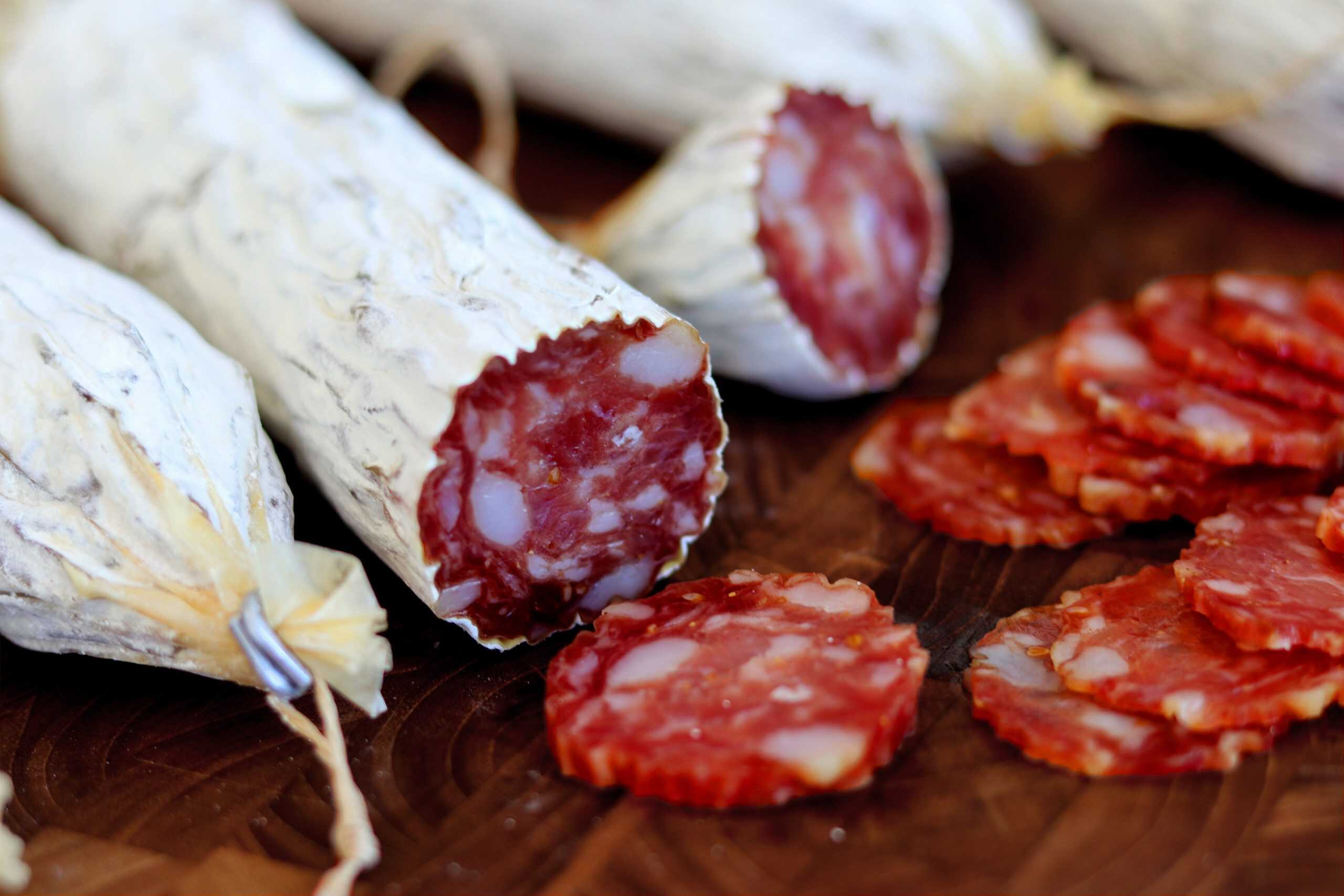
O Tuscan Salami is typical of Italy and is also known as finacchiona. Tuscan Italian Salami Finocchiona originates in the Middle Ages, between the 14th and 15th centuries. It is a salami that contains fennel, or finacchio in Italian, which is why it is also known as fenocchiona. It is a salami that is generally thick and has medium or long maturation. Fennel was initially used to replace black pepper, which was a much more expensive ingredient. The product became popular and is now produced in several regions of Italy.
Continue reading Salame Italiano Finocchiona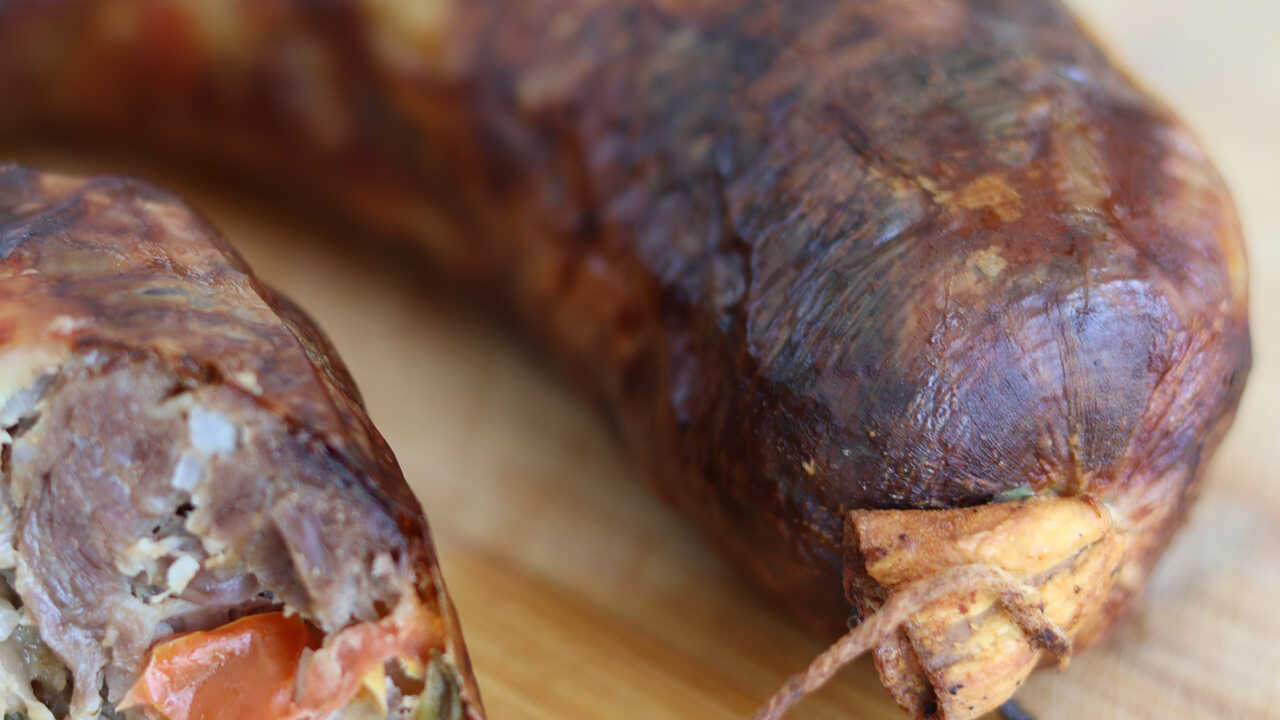
Thick tripe is a traditional sausage from the southern region of Brazil, especially in Rio Grande do Sul. It is a mixture of condiments, vegetables, rice, tomatoes and different meats, which can be of pork, beef or poultry origin.
Continue reading Tripa grossa
Black ham ham is made with salted pork shank, then marinated in a mixture of black stout beer, brown sugar, sugar cane syrup and seasonings. These steps take 1 and a half months to complete. Then the black ham is hot smoked until it reaches an internal temperature of 65 to 72ºC.
Continue reading Black ham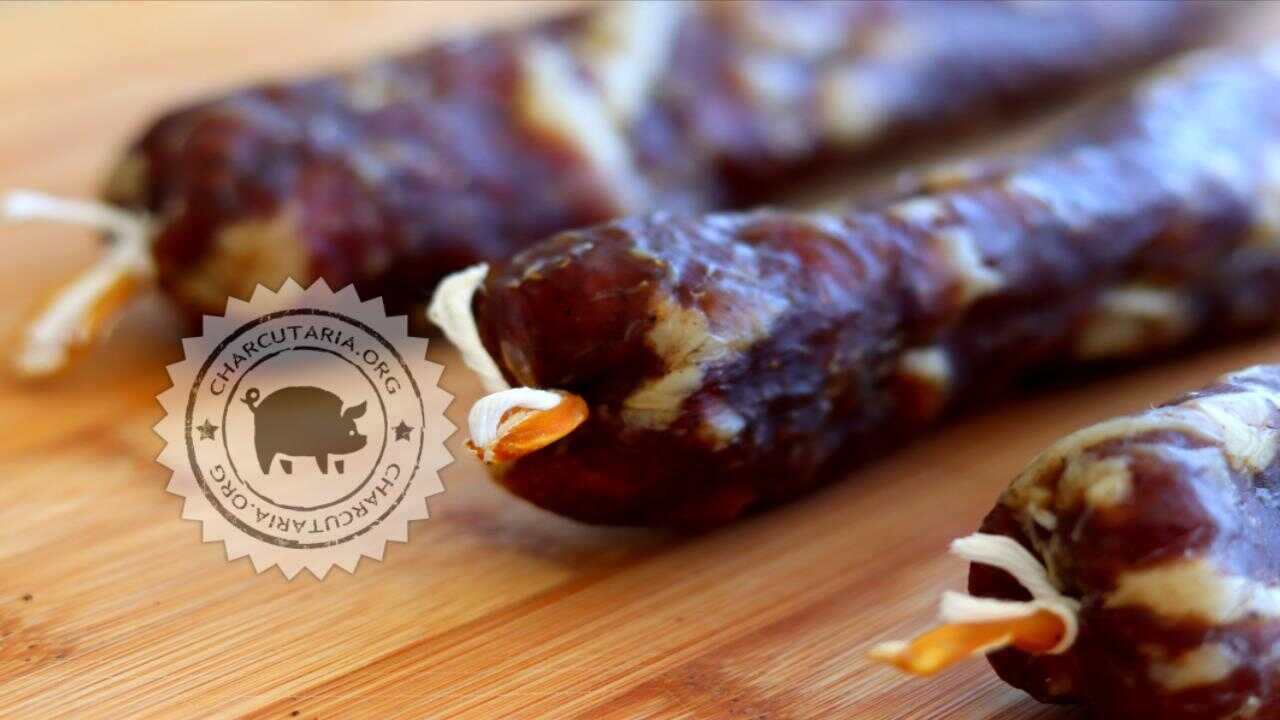
This salami was made for those who wish to produce homemade salami without any additives or do not intend to purchase equipment. Using things available at home it is possible to make great salami. The only additional ingredient that cannot be missing is tripe, which was straight beef in this case. I used a mini wine cellar, which I have at home, for the drying/maturation process.
Continue reading Salame feito em casa, sem equipamentos e sem aditivos
Mixed double salami, homemade. This salami was made with beef ribs, loin and pork shank. It is very decorative and attractive for consumption, its preparation is simple and can be done at home using a cellar or a specific air-conditioned environment. It is also possible to do this in adapted refrigerators, as long as the maximum temperature is maintained at 14ºC, the humidity is close to 80% and there is some type of light and constant air circulation.
Continue reading Salame duplo feito em casa
Kibbeh (kibe, كبة, kibbeh or kubbah) is a typical Middle Eastern dish consisting of a dumpling made from bulgur or semolina dough, stuffed with meat, seasoned with herbs and condiments. The name derives from kubbeh which in Arabic means ball. It is a very popular dish in Lebanon, Palestine, Syria and Iraq. It is also common in North Africa, Turkey, the Arabian peninsula and part of the Caucasus, such as Armenia. Syrian-Lebanese immigrants spread the recipe to South America. In Brazil it is a very common dish, served in bakeries, cafeterias, restaurants and bars.
Continue reading Receita de Linguiça de Quibe kibbeh sausage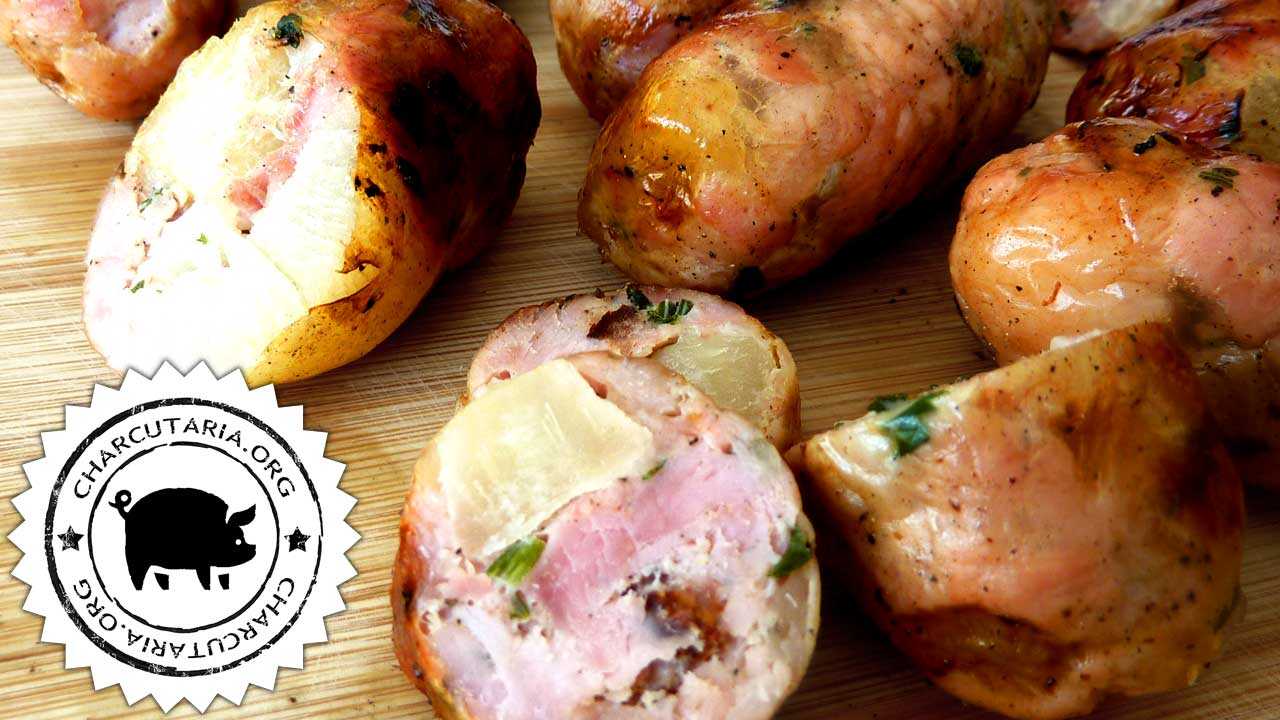
Sausage made 100% by hand, without equipment. Making sausage at home is very easy, you just need the minimum ingredients and equipment. More than a unique flavor, it's a way to make sure you're only including quality ingredients. All functional additives are optional, so it is possible to make a great and healthy sausage without any chemical additives or excess fat.
Continue reading Linguiça de pernil com mandioca e bacon
Coppa or capicola is an abbreviation of the Italian Capocollo, which in turn comes from the Latin “caput collum” and means neck, as pork neck meat is traditionally used to make this charcuterie delicacy. It can also be made with pork loin, which has much less fat than the neck. It is not difficult to make cups at home, but it is laborious as it takes a lot of time and you need to understand the processes involved to be sure of what is being done.
Continue reading Receita de copa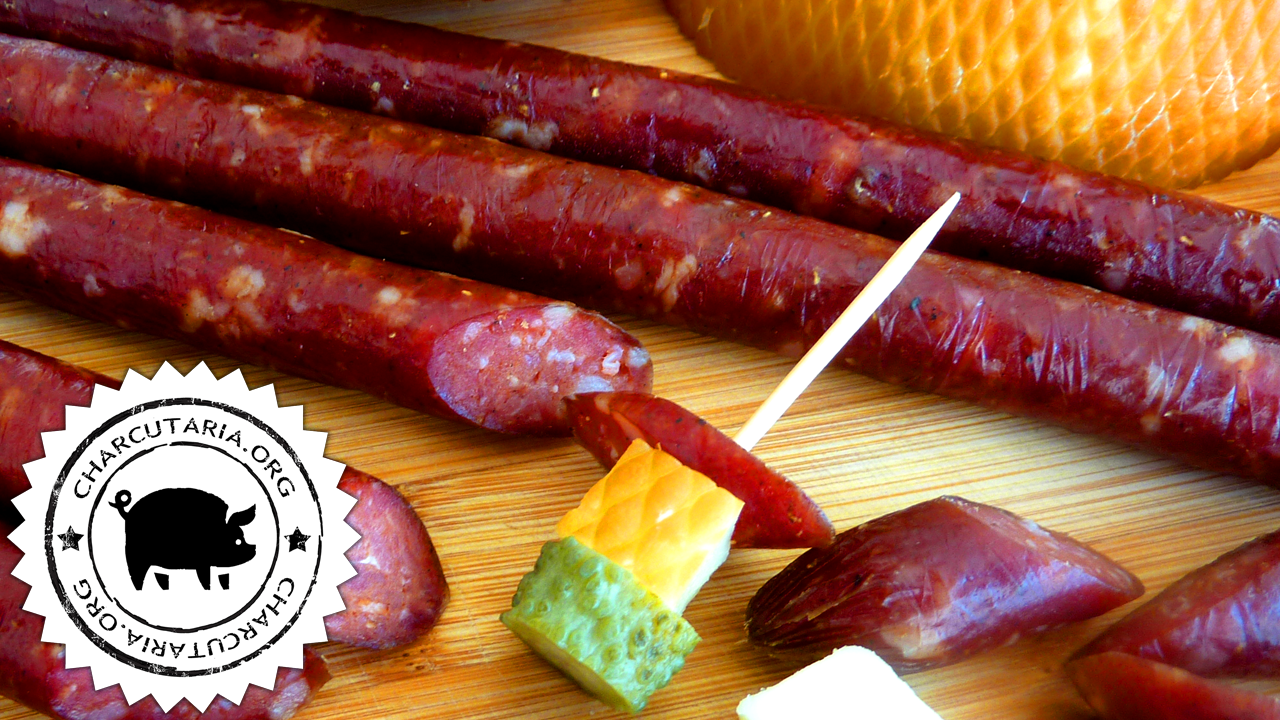
Salami appetizer, homemade salami ready in 3 days. This salami was made by hand, using just 6 ingredients and was ready in 3 days. Anyone can do it at home without using sophisticated equipment. It is essential to use a reduced caliber casing (low diameter) so that the salami can dry quickly.
Continue reading Salaminho misto aperitivo em 3 dias